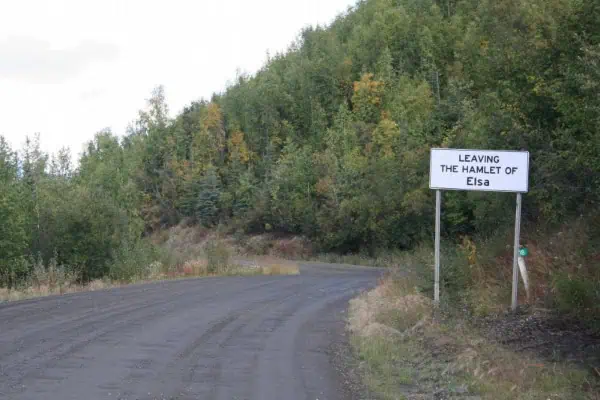Lucile Hunter was an intrepid Yukon pioneer. Just 35 years after slavery was abolished in 1863 in the United States, she and her husband, Charles, joined the stampede to the Klondike from the US in 1897.
As black Americans, they hoped to trade the cruelties of their homeland for a frontier that promised equality and hope. They were very few black people making the arduous journey on the rugged and grueling Stikine Trail.
Lucile was only 19 years old, and pregnant when she made the trip North. The couple stopped at Teslin where Marie Elizabeth Teslin Hunter was born and named for her birthplace.
Rather than wait for breakup, they mushed to Dawson. The booming goldfields offered many opportunities.
The Hunters staked Bonanza Creek claims on February 26, 1898, and operated a Grand Forks restaurant. Charles worked for the Yukon Gold Company. After World War I, they mined silver claims near Mayo, and gold claims at Black Hills. Lucile also worked as a nanny in Dawson City and as a cook at Keno Hill.
Their daughter Teslin grew up on the creeks but moved south to Seattle, Washington, around 1909 to go to school. She married a Danish fisherman, Carl Sorenson, and had one son, Leo Carl (known as Buster), who was born in 1920.
Sadly, Teslin passed away in 1925, and her husband returned to Denmark.
Lucile brought Buster to Dawson City to live with them, go to school and to mine with his grandfather in the summer.
Charles died in 1939. Lucile kept three claims in the Klondike and a silver claim in the Mayo district. She walked the 140 miles between mines and managed the claims herself, hiring people to work for her. Lucile maintained the claims for decades. She was hard-working and well respected.
During World War II, Dawson shrank and Whitehorse boomed.
When the Alaska Highway was being built, Lucile and Buster moved to Whitehorse. She opened a laundry to wash the sheets and clothes of the Alaska Highway workers – many of them African-Americans. For decades she ran the little laundry on Wood Street.
She also began to babysit. And she took in ironing, which Buster delivered among the sprawling maze of shanties. Buster enlisted in the military during World War II, and afterwards he moved back to Queen Charlotte Island where he /had worked as a logger.
Lucile lived alone and was fiercely independent. Failing eyesight forced closure of her laundry, but she renewed her mining claims, flying to Dawson in 1949. She then returned to Whitehorse.
Her great granddaughter Carol remembers her as a big, strong woman who loved to spoil kids. She was very interested in the goings-on in the world and had a lively wit and keen intelligence. She kept up with world events by listening to her short-wave radio, and she liked to engage her visitors in debate.
When a fire destroyed her home, friends provided an apartment and supplied food and care until she moved to the hospital. The Yukon Order of Pioneers granted honorary membership for her perseverance as a miner. She was their first female member. Lucile died on June 10, 1972, at 94 years old. She was survived by her grandson Buster, his children, and now her great, great, great grandchildren. Her accomplishments are remarkable for a woman and doubly so for a black woman of that era.
About the Hidden Histories Society Yukon
The society’s Facebook page says the purpose of the society is “to foster and increase the understanding of ethno-cultural history in the Yukon by engaging in research and the production of displays and events in communities throughout the territory and elsewhere.”
For more information, contact [email protected] or check out their website at www.HHSY.org.




